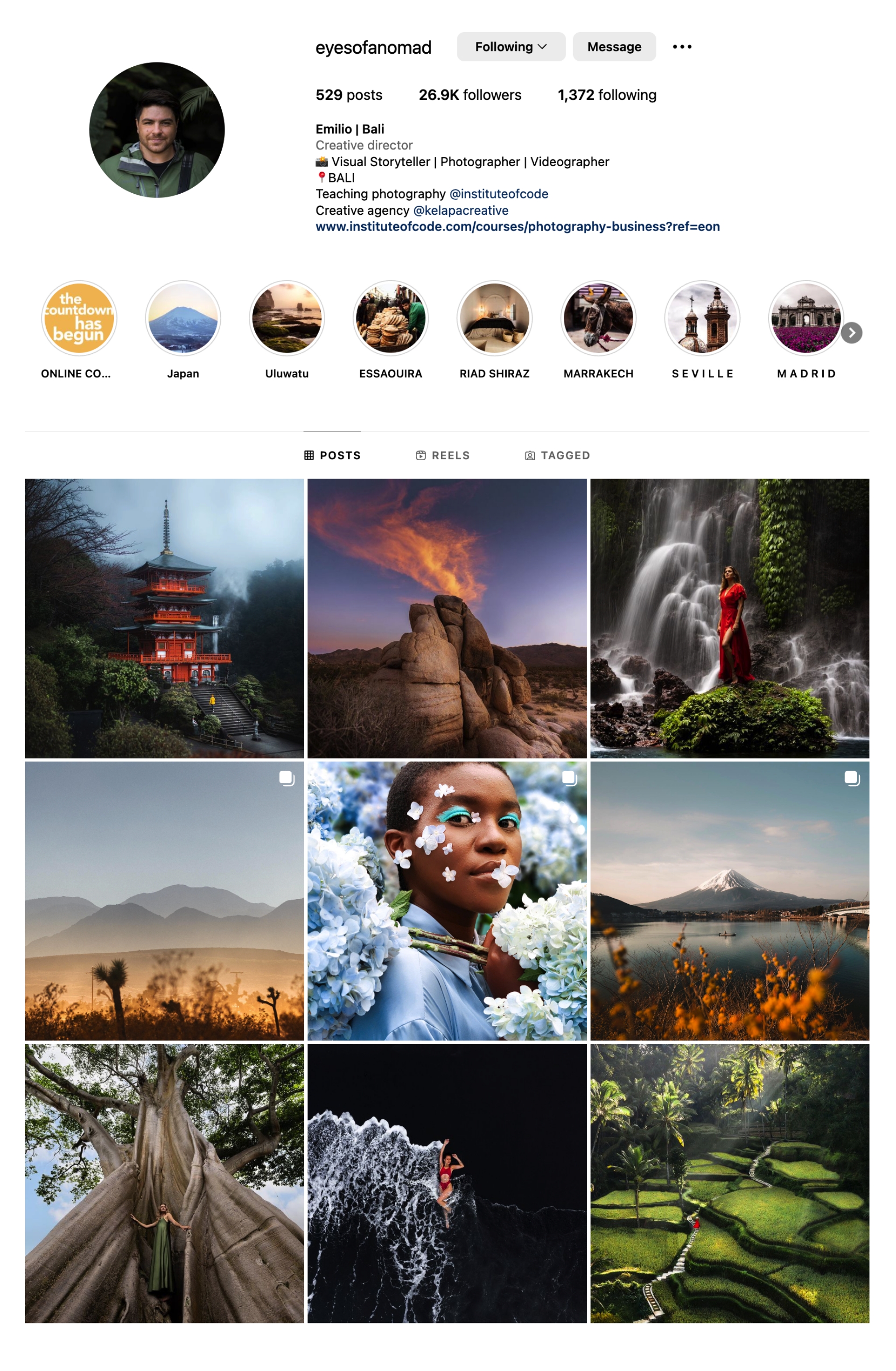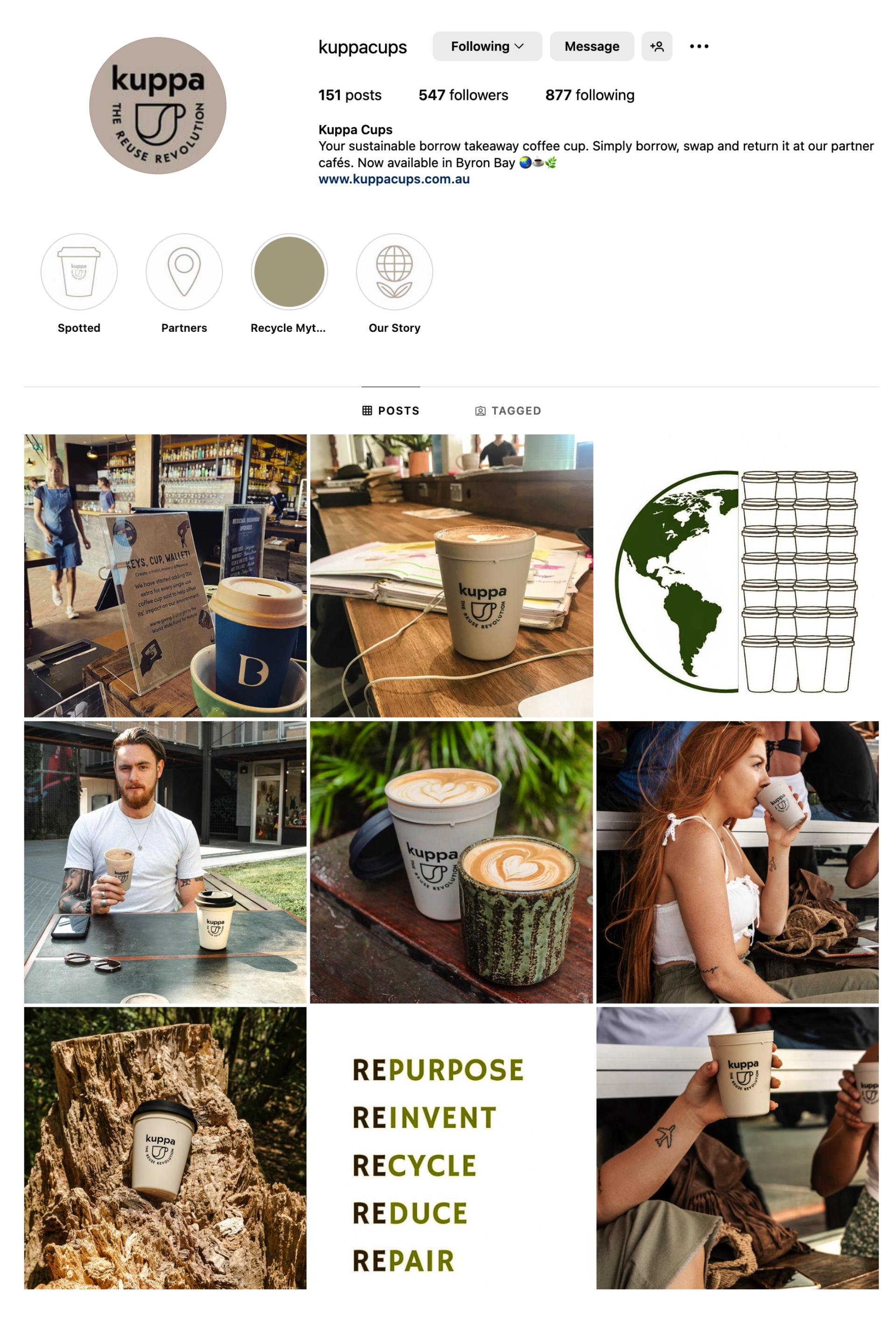If you’re reading this article I’m guessing you fall into one of two categories. Either you have been working your ass off building up a following on social media, and despite doing all the ‘right things’ you just can’t figure out how to actually make a living from this and start getting a return on all your hard work.
Or maybe you are sitting in your cubicle at your 9-to-5 job desperately trying to figure out how to escape the rat race and start living that dream life — getting paid to travel the world, staying in luxury hotels, building a business on your own terms.

Being a social media influencer or blogger can be big business – I personally know dozens of influencers who have far surpassed their past corporate salaries earning comfortable 6-figures. But for every person who is actually succeeding and building a profitable income for themselves, there are literally dozens who are drowning in ‘free stuff’ but earning less per hour than a fast-food server.
If you are looking for detailed insights, you’ve come to the right place. We’ve spent the past 3 years working alongside (and learning from) experts in the field like Renee Roaming and Jess Wandering teaching students from all over the world through our immersive social media bootcamp in Bali, and we love breaking down some of the myths and misconceptions about this industry.
In this article we’re going to break down step-by-step:
- What an influencer actually is
- Why influencer marketing is a growing industry
- The different ways of making money as an influencer
- How much money influencers can earn
- The skills you need to make money as an influencer
- How long it actually takes to start earning money as an influencer
- The 5 next steps you need to take if you want to pursue this career path
- Other options to build an online business, if you get to the end of this article and decide that being an influencer just isn’t for you.
What is an influencer?
An influencer is anyone who has an audience of people who know, like and trust them. Who has built up a following of people who are genuinely interested in the content they share, in their perspectives, or what they are doing.
The phrase “influencer” often conjures up images of tanned blonde bikini models taking selfies, but in reality applies to a whole spectrum of people. Some examples:
- You share snippets of your daily life to your 100k followers on instagram
- You have a blog where you share travel stories, hotel reviews and destination guides
- You have a youtube channel where you share tutorials on photography
- You are considered a thought leader in a particular industry and are regularly invited to speak at conferences
- You’ve built a community of people passionate about environmental sustainability and slow fashion
In reality anyone who has an audience of people (on-line or in real life) who care about their opinions, experiences or the content they are creating is an influencer.

Commonly though, an ‘influencer’ would be anyone who has built up a curated, niche audience that they regularly share with on social media. You could be a travel blogger, a lifestyle or fashion influencer, a body-positivity activist, an outdoor adventure content creator, a youtube vlogger, etc.
Why influencer marketing is a growing industry
Influencer marketing is one of the fastest growing areas of digital marketing — in 2019 over $8 billion dollars were spent by brands on influencer marketing, and for good reason.
When done well influencer marketing can achieve better results, faster for brands than then same money invested into traditional advertising channels (like TV or radio) or digital platforms like facebook or google ads.
Not only is it reaching more people (the average CMP or cost per thousand impressions for influencer marketing is often as little as $5-10 compared to $15 for TV, $9 for digital ads) but it’s reaching a targeted, niche audience who already have an established relationship with the influencers they follow.
Which do you think is more compelling, an ad you see on facebook featuring a new product or an influencer you trust sharing their favourite products with you (and often showing you in-depth behind the scenes use of the products)? If it’s not obvious, science definitely agrees it’s the later — as consumers we are much more likely to buy something that’s recommended by someone we know (even digitally) than just seeing an ad online.
And that’s the number one reason why influencer marketing is a growing industry — marketing is essential to businesses, and influencer marketing is a powerful platform for brands to connect with consumers.
Our ultimate guide to how to earn money as an influencer or blogger
Being ‘popular’ is one thing, being profitable is another. This is a comprehensive list of every single way that influencers earn money.
How much money can bloggers and influencers actually earn?
Many of the mentors that we have had the pleasure of working with at our social media bootcamp have been earning comfortable 6 figure salaries — we’re talking $100,000 - $350,000 per year. And that’s before accounting for the fact that many of them have significantly lower expenses because of how many gifted products and services they receive.
On the other end of the spectrum, there are lots of influencers with thousands of followers and no viable business. There are lots of skills, and a ton of hard work required to succeed in this industry and not everyone will do what it takes to succeed.
Rates for influencers vary dramatically based on a host of factors - your niche, your audience, the quality of your content, how engaged your followers are, etc. It makes sense that you’ll earn more per post promoting to an audience of high-end luxury consumers will then if your audience is budget backpackers. So the following are averages — some people are earning more, others are earning less.
How do influencers and bloggers earn money?
1. They are gifted free products
Ok, I know this is a cheeky answer and we all know that free stuff doesn’t pay the bills but bear with me. Almost every influencer I know subsides their income by receiving things for free that they would otherwise need to pay for — hotel accomodation, meals, clothing, trips, flights, photography gear, professional services (accounting, photography, web development).
If you were going to spend money on food or accomodation, but you receive it for free as part of a collaboration then that’s lowering your expenses.
One of our biggest expenses personally is eating out at nice cafes and restaurants, so a restaurant collaboration offering a $500 credit means less money spent each month on food.
We’ve done collaborations for all kids of products that we were actually going to pay for — a new mattress, $1000 worth of home decor, restaurant credit, hotel stays, clothing, wine. Gifting campaigns are really common because they are also great for businesses. If you are a hair salon that’s struggling to get bookings you can find influencers willing to promote your business in exchange for hair treatments, and that is often a lot cheaper than having to spend actual cash investing in other marketing platforms.
2. They are paid for sponsored content
Influencers and bloggers get paid by brands to create and share content about products on their social media accounts. That might mean getting paid to wear a certain outfit in an instagram post and tag the brand in the photo, or do a video walk-through of a hotel on their snapchat account, or doing a detailed product review on their youtube account.
A sponsored post is anytime an influencer is getting paid specifically to share content about that brand with you, and they typically get paid a flat rate for doing so.
This is where many influencers earn the bulk of their income.
$100 per 10,000 followers is the average industry rate for a sponsored post on instagram, and $50 for a sponsored story. Meaning if you had 300k followers, you would charge approximately $3000 per sponsored post and $1500 for a few instagram stories.
It’s not uncommon for bigger influencers to offer packages, where they might offer 2-3 posts, a handful of stories, etc.
3. Through ad revenue
Ad revenue is how many bloggers think they will earn money, but the reality is it’s incredibly hard to earn an income on a blog or youtube channel just through advertising revenue. You need to have huge amounts of traffic to your site before you start earning any kind of income from banner and display ads
With 10,000 monthly page views you are lucky to earn $34 in ad revenue for all your hard earned effort. 30,000 Youtube views per month will earn you only $45 in ad revenue.
On bigger blogs though, advertising revenue is one of the income streams and as you grow you can move from Google Adsense to higher-paying platforms like MediaVine where rates can reach $500 per month if you have 25,000 sessions per month.
It’s not hard to see how a blog that was regularly receiving 100,000 - 500,000 sessions per month could be earning pretty good passive income from ad revenue.
4. Through affiliate commissions
One of the most effective ways to earn an income with a blog is through affiliate partnerships – where you promote a company or brand’s products and they reward you with a commission when people purchase. For example…
- Writing a recipe post and linking to purchase each ingredient at an online grocery store
- A list of the top 10 hotels with links to their Booking.com pages
- An article on the importance of having travel insurance linking to a World Nomads affiliate link
- A ‘gear guide’ of your favourite photography gear with links to buy on B&H
- How to build a blog article, with affiliate links for domain, hosting, website themes and more.
- A Christmas gift guide, with amazon affiliate links.
How does affiliate marketing work? First you sign up for the company’s affiliate program, then they generate special affiliate tracking links that monitor who clicks on your link and ultimately makes a purchase. Each company has their own terms, but many of them will pay a commission on any product purchased within a certain time frame (i.e. 72 hours) even if it’s not the product you linked to.
So for example, you create a blog post that links to your favourite travel backpacks on Amazon. Someone follows your affiliate link, and then rather than purchase the backpack they go ahead and buy a pair of headphones worth $500. Amazon then pays you an affiliate commission of around 5% = $25.
For the same amount of traffic, you tend to earn more money through affiliate commissions than through ad revenue because you are showcasing products that you know your audience is interested in.
If Booking.com pays 10% affiliate commission, and a dozen people book hotel stays worth a few hundred dollars through your links each month you can see how the affiliate income starts to grow.
5. Through content creation for brands
To become a successful blogger or influencer, you typically need to be great at creating content. One way that you can start earning money, even when you have a small audience is to get paid to create content for brands.
This could be writing a guest blog post each month on the company’s own blog, taking product of lifestyle photos for them, or even creating custom graphics for their social media.
Many big instagram influencers earn at least part of their income by staging photoshoots for brands. 5 - 10 photos for a big brand might earn you on average $1500 - $5000.
6. Selling their own digital or physical products
Some influencers use their social media assets to sell their own physical or digital products – from launching a swimwear line or fashion label, to selling online courses.
Once you’ve build a big audience this can be a great strategy to start building additional revenue streams.
The hard truth about becoming a blogger or influencer
When I chat to people about the world of influencer marketing, I’m not sure which shocks them more; the fact that influencers can be earning 6 figure salaries while living their dream lives, or the fact that it takes a lot of work to get to that level of success.
Many people seem to think it’s as easy as throwing up a quick Wordpress blog or snapping a few photos on instagram with #wanderlust and expecting to grow into an overnight success, but the reality of this industry couldn’t be further than the truth.
Almost every successful influencer / blogger I know worked 80+ hours per week for at least 1-2 years (or part time over 3-4 years) before they started earning a comparable salary. They invested time and money in their own education and treated their blog or social media platform not as a hobby but as a business, perservering through every little hiccup and hurdle.
They worked really hard for no return at first, and then for peanuts before they started earning any kind of real money, and they still work more than full-time hours to run even now.
5 steps to becoming an instagram influencer or blogger
Want to become a successful instagram influencer or blogger? While the specifics of course vary a little in each niche / brand, this is overall a step-by-step approach on how to do it.
1. Understand your target audience, find your niche and build a brand
In an oversaturated marketplace this step is critically important and often overlooked. You need to be able to understand who your audience is, what unique value you can offer them, and how the content you create can build a unique and memorable brand.
2. Create incredible content that your audience will love
Have a look at the fastest growing influencers on Instagram – and you’ll notice that their photos look like something out of a magazine. This means not only learning how to take and edit incredible photos, but also being willing to invest the time into creating incredible content - most influencers spend around 30% of their time on content creation.
As a travel blogger or influencers, to capture the most beautiful light life often revolves around sunrise & sunset. On a recent content creation trip to Japan we were up before 5am to shoot at sunrise at least 12 times over the 3-week trip.
As a blogger in another niche, that might mean learning to create stunning flat-lay photos or interactive gifs, or perfecting your copywriting skills to craft engaging blog posts.
3. Understand the platforms you work on & how to grow your audience
Having great content is one thing, but if nobody is seeing it what’s the point? You need to be able to understand the growth tactics to not just grow your metrics (followers, page views, etc) but also build an engaged community of people who know, like and trust you.
How do you do that? First you understand the mechanics of how that platform works – as an influencer you should understand how the instagram algorithm works, how to create an effective hashtag and location tag strategy, and how to leverage viral growth tactics (not cheating with instagram bots) to grow your followers.
As a blogger, you need to understand how to use SEO & Pinterest to create a content strategy that drives free traffic to your blog, and then understand how to capture those visitors with lead magnets, email marketing and retargeting.
4. Connect with your audience
The average influencer spends 2-4 hours per day, every day, engaging with their community on instagram. Replying to comments, reaching out to other members of the community, responding to DMs, etc. Especially on instagram, this step is critical and I am yet to meet a successful influencer who has grown a following quickly without this commitment.
Blogging is a little more flexible on this front, but it’s still important to strategically build trust with your audience – especially when you eventually start to monetise.
5. Building a business & earning money!
What value can you offer brands? How do you pitch? What’s a media kit? Now that you’ve mastered the steps above and built up an engaged audience and you are ready to start earning an income, you need to understand the business side of influencer marketing and start pitching to clients.
The first step is typically for unpaid collaborations in exchange for products or hotel stays. If you manage these initial partnerships well however, this can be a stepping stone to future paid collaborations.
At this stage you’ll need to understand how to negotiate paid brand deals (and turn a no into a yes), how to manage clients, and how to start building ongoing revenue.
As a blogger you’ll likely be pitching yourself to affiliate programs as well, and making sure you maintain your blog traffic so that you don’t lose access to any of them during a quiet month.
Help, I need to start earning money online now!
We get it, building your personal brand is such a valuable thing to do but it’s not something that’s going to start paying the bills right away. It takes months or even years to build up your audience to the point that earning money through sponsored posts, ad revenue or affiliate commissions is viable.
So what do you do in the meantime? Either you stick with your 9-5 job while you build up your blog or instagram on the side, or you start with the skills you can use to work remotely right now.
Become a content creator or social media manager, and start earning money right away
One of the reasons we emphasise to students of our Social Media Bootcamp to practice their content creation skills is we’ve seen first hand graduates land retainer clients (who pay them every month) for content creation or social media manager within weeks of finishing the course – not something you could ever achieve through sponsored content or ads.
As a content creator you would create content for a brand or company’s social media platforms. It could be a cafe, local hotel, clothing or product brand, etc.
We’ve had students with less than 1000 followers land hotel stays and free trips worth thousands of dollars all through content creation. You’re using all the same skills mentioned above (marketing strategy, photography, editing in Lightroom, pitching to clients, etc) but you don’t have to wait until you’ve built up your own audience.

As a social media manager you would manage a company’s social media accounts, creating a beautiful aesthetic (either with content you created or ones the company provided), writing engaging captions, scheduling the content with a social media scheduling tool, adding relevant hashtags and location tags, etc.
With a good portfolio (something we emphasise to every student and help them create during our bootcamp) you can start landing retainer social media clients worth $500 - $1500 per month that you can work on in your own time from anywhere in the world.

Our alumni Chelsea was hired to manage Kuppa Cups content creation and social media – every freelancer knows how amazing it is to have a reliable source of income coming in every month, rather than waiting for ad-hoc jobs.
You don’t have to spend a dollar learning how to earn money on social media
I’m not going to tell you that the only way to learn these skills is attend our course, because it wouldn’t be true. All of the information you need is already out there and there are countless free blog posts and videos on all the topics I mentioned above.
A search on google for ‘how to become a blogger’ yields 308 million results so if DIY learning is the pathway you want to take there are loads of resources out there. I would start with these ones as a starting point:
- Hubspot has great articles on building your brand and finding your niche
- Neil Patel has some of the most comprehensive content on SEO strategies or you can watch our free SEO challenge
- ProBlogger has an abundance of resources on how to start and grow your blog
- Social Media Examiner is filled with the latest industry news about growing a following on social media
But here’s the thing, navigating the abundance of free information is time consuming. If you want to pursue your blog as a bit of a hobby and are happy for it to grow slowly over time and you don’t really plan to earn an income off it then DIY is definitely the route to go.

DIY might seem like it’s a free option, but that’s only if you don’t take into account the value of your time and the potential income you can start earning.
If you want to hit the ground running, and learn directly from experts in the field so that you can start earning an income in just a few months, then our course might be the best option for you.
P.S. Have questions about pursuing a career in social media? I set aside a few hours every week to speak to interested students like yourself who want to know not just generic information they can find online but specific answers to their questions and whether our program is the right fit for them. If you want to jump on a call, send me an email and let’s chat.
